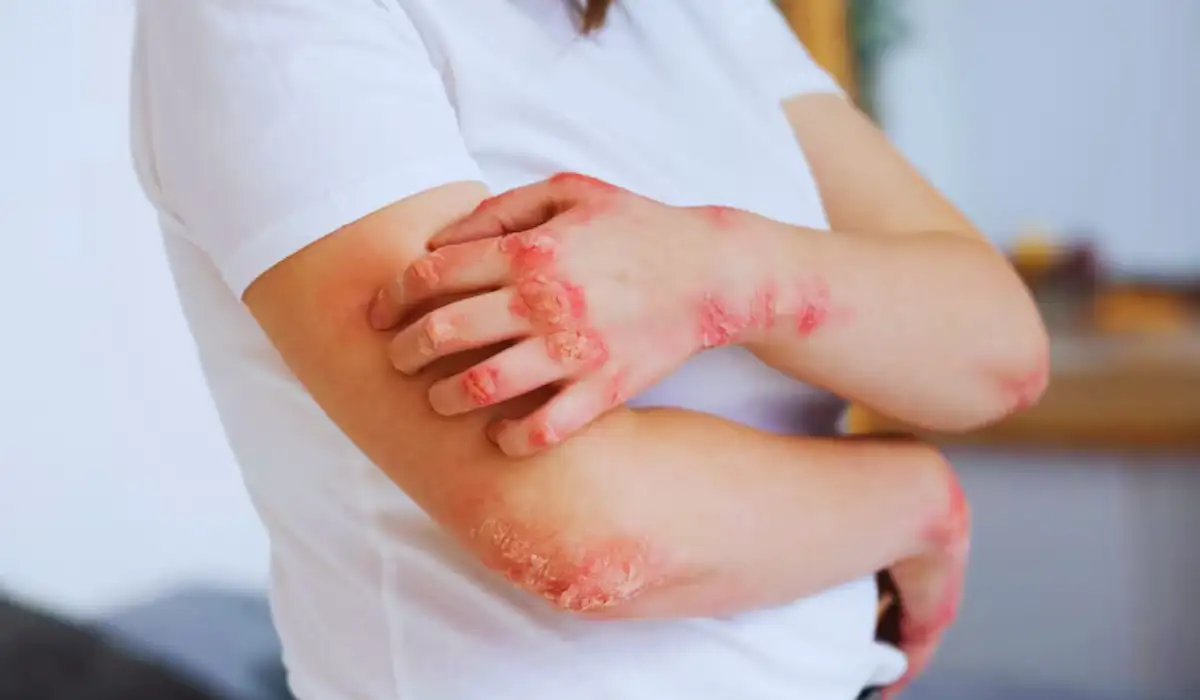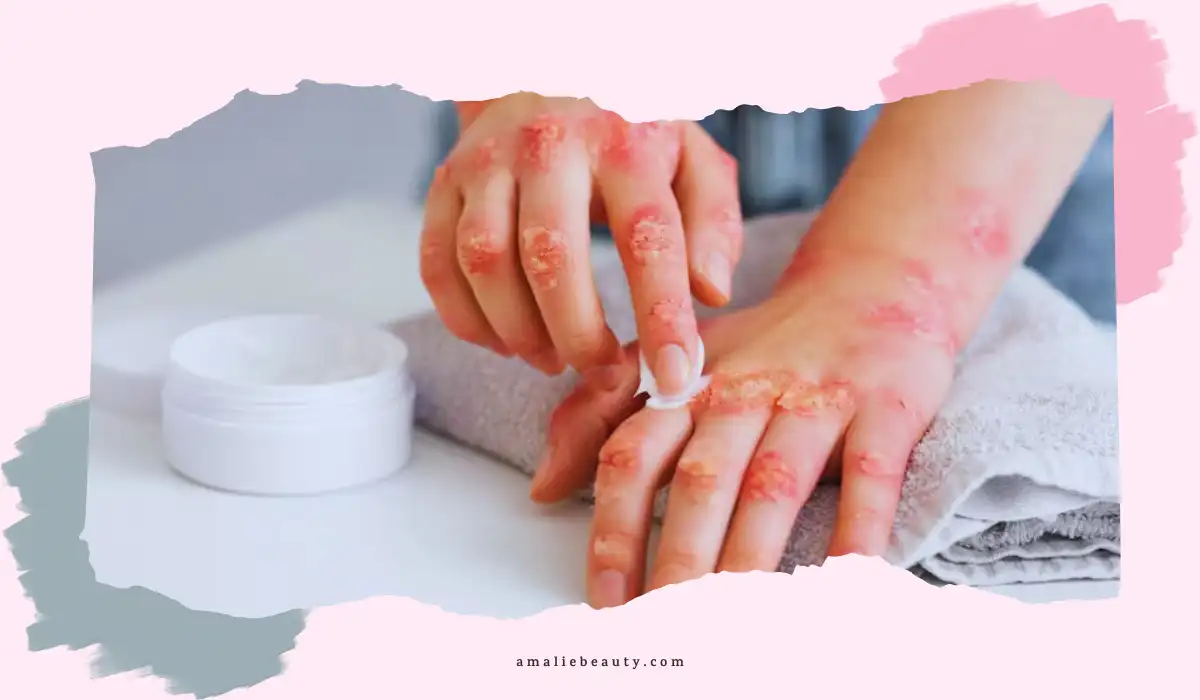Spongiotic dermatitis is a skin condition that can be itchy, painful, and frustrating to deal with. As someone who has struggled with skin issues for years, I understand how uncomfortable any skin irritations can be.
In this guide about causes, symptoms, prevention, I will cover everything you need to know about this condition – from figuring out if you have it to preventing flare-ups.
What exactly causes? What are the symptoms? And most importantly – how do you find relief? I have dug into the latest research and connected with skin experts to find answers to these pressing questions. My goal is to empower you with the knowledge you need, to take control of spongiotic dermatitis.
What is Spongiotic Dermatitis?

Spongiotic dermatitis is a chronic skin condition characterized by red, intensely itchy rashes on the body. It is often mistaken for other similar conditions like atopic dermatitis or eczema.
But while it shares some similarities, spongiotic dermatitis has its own distinct symptoms and causes. Understanding what triggers this uncomfortable condition is key to preventing flare-ups and finding relief.
Is Spongiotic Dermatitis an Autoimmune Disease?
Unlike atopic dermatitis, spongiotic dermatitis is not autoimmune in nature. Instead, it is an inflammatory skin disorder triggered by irritants and allergens. When your skin comes in contact with these triggers, it mounts an inflammatory reaction that leads to red, angry rashes.
This inflammation is what causes the signature “spongy” appearance of the skin, along with intense itchiness and stinging. Unlike autoimmune conditions, spongiotic dermatitis is not caused by your immune system attacking healthy tissue. The good news is that avoiding your unique triggers can help prevent uncomfortable flare-ups.
What Causes Spongiotic Dermatitis?
Spongiotic dermatitis can be triggered by a variety of irritants, allergens, and environmental factors. Common causes and triggers include:
- Fragrance or ingredients in skin care products and cosmetics
- Pet dander, pollen, grass, molds
- Laundry detergent, soap, household cleaners
- Certain foods like eggs, peanuts, shellfish
- Stress, hormonal changes, pregnancy
- Dry air, low humidity
- Sweating and overheating
- Friction from clothing
As you can see, triggers run the gamut from environmental to lifestyle and diet-related. The good news is identifying your personal triggers enables you to control flare-ups through avoidance. Tracking when and where symptoms occur can help uncover the source.
What are the Symptoms of Spongiotic Dermatitis?
Spongiotic dermatitis has some well-defined symptoms to look out for. Being familiar with these can help you differentiate it from other skin disorders. Typical symptoms include,
- Intense, pruritic (itchy) red rashes
- “Spongy” swelling of skin
- Oozing, blister-like lesions
- Burning or stinging sensations
- Dry, scaly, cracked skin
The location of the rash provides more clues – it typically occurs on the,
- Face
- Eyelids
- Neck
- Armpits
- Groin
- Breasts
- Hands
- Feet
The rashes can be localized to one area or spread across large sections of the body. Flare-ups also tend to come and go. Pay attention to when symptoms improve or worsen. This can help you identify triggers to avoid. Tracking your outbreaks enables you to pick up on patterns over time.
Spongiotic Dermatitis vs Atopic Dermatitis
Because spongiotic dermatitis shares similarities with atopic dermatitis (eczema), many people confuse the two. But some key differences exist.
While both cause red, weeping rashes, atopic dermatitis often starts in childhood. Spongiotic dermatitis more commonly begins during adulthood.
The appearance of the rash also differs – eczema lesions are typically dry, scaly and thickened. Spongiotic dermatitis oozes clear fluid and skin swells with a spongy look.
Itching tends to be more intense with spongiotic dermatitis as well. Pay attention to these nuances to help your doctor diagnose appropriately. Accurate diagnosis paves the way for effective treatment.
Spongiotic Dermatitis Treatment: Lifestyle Changes
When spongiotic dermatitis flares up, you’ll likely reach for medicated creams to soothe burning and itchiness. Topical steroids, topical calcineurin inhibitors, and antihistamines provide relief.
However, the root of spongiotic dermatitis lies in external skin triggers. That’s why lifestyle measures are crucial for controlling outbreaks long-term. Key steps include:
Spongiotic Dermatitis Foods to Avoid
Diet modifications can work wonders to calm inflammatory skin conditions. Beware of foods that tend to trigger allergies and inflammation. These include:
- Dairy products
- Eggs
- Soy, wheat, gluten
- Corn, citrus fruits
- Spicy foods
- Alcohol, caffeine
- Artificial ingredients
I’ve also found value in tracking symptoms after meals. This helps you pinpoint problematic foods that worsen rashes. An elimination diet can confirm suspicions so you know what foods to avoid long-term.
As you experiment with dietary changes, focus on anti-inflammatory foods. Leafy greens, omega-3s from fish, colorful fruits, veggies, and herbs can nourish skin and calm inflammation. Stay hydrated with water and herbal teas as well.
Other Lifestyle Changes to Prevent Spongiotic Dermatitis Flare-Ups
Along with diet, other lifestyle measures can reduce outbreaks:
- Wear breathable cotton clothing
- Take lukewarm showers
- Use gentle, fragrance-free skincare
- Apply moisturizer within 3 minutes after bathing
- Use hypoallergenic laundry detergent
- Clean with non-toxic products
- Avoid harsh soaps
- Manage stress with yoga, meditation, journaling
- Get 7-9 hours of sleep nightly
- Humidify air during dry, cold months
It does take some trial and error to figure out your unique flare triggers. But putting in the detective work pays dividends for your skin. Slowly incorporating the above changes helps you pinpoint what makes the biggest difference.
The key is consistency with avoidance and skin-friendly habits. With time, you can get breakouts under better control and enjoy more symptom-free days.
When to See a Doctor About Spongiotic Dermatitis?
Mild spongiotic dermatitis often responds well to over-the-counter topicals and lifestyle measures. But if your symptoms persist or worsen, see your doctor or dermatologist.
Signs it’s time for professional help include:
- No improvement after 2-3 weeks of self-care
- Intense itching disrupts sleep and daily life
- Open wounds or oozing blisters
- Signs of skin infection – increased pain, heat, redness, odor, fever
- Spreading body rash
A doctor can confirm your diagnosis, rule out other conditions, and provide prescription-strength relief options. For severe, stubborn cases, phototherapy or oral immunosuppressants may be warranted. Catching this condition early and taking quick action enables faster healing. Don’t hesitate to seek medical care if home treatment falls short.
Conclusion
Dealing with recurring breakouts can be disheartening. But take heart knowing you have the power to tame this condition. Avoiding triggers, adopting a skin-friendly lifestyle, and using medicated creams help minimize frustrating flare-ups.
While symptoms may come and go over time, staying vigilant gives you the best chance for relief. I encourage you to be patient with yourself too. It takes diligence to pinpoint your unique outbreak triggers. But putting in the self-care work pays dividends for your skin and comfort long-term.
Hope this guide gave you valuable tips and direction to start taking control. No need to suffer in misery – you’ve got this! Let me know if you have any other questions regarding spongiotic dermatitis or other skin conditions.
Reference
- Molecular and cellular characterization ofspongiotic dermatitis (spongiotic). (2015, April 20)
https://clinicaltrials.gov/ct2/show/NCT00371163

